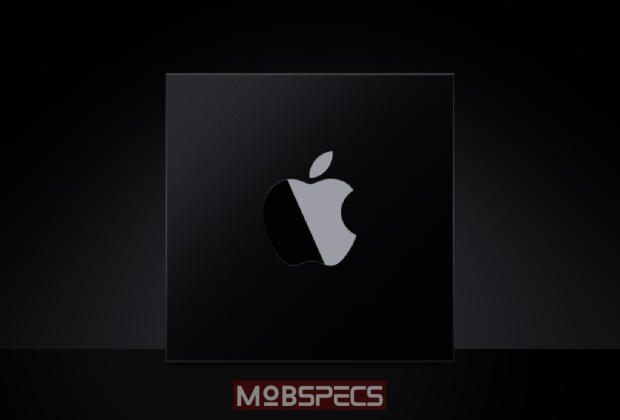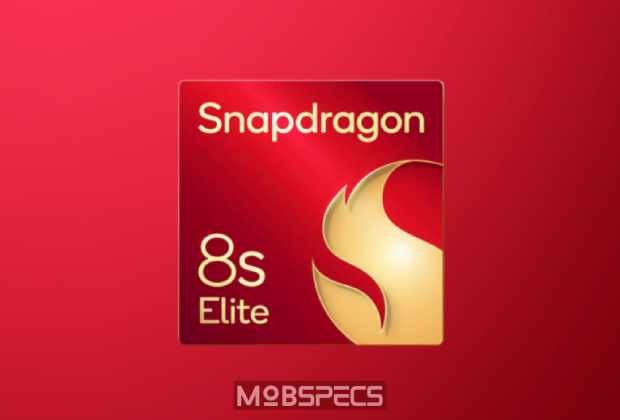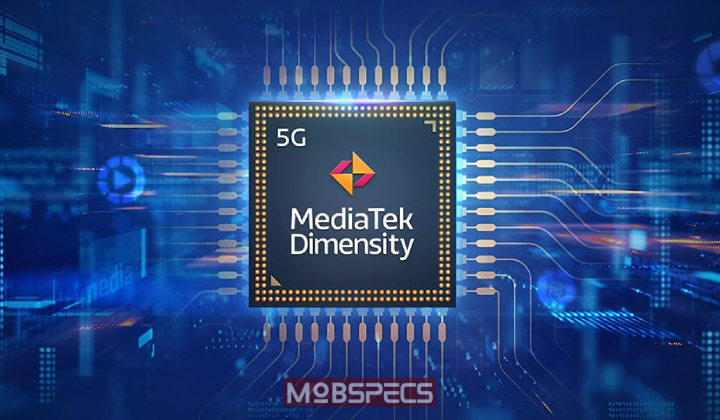
Apple’s ongoing success in the semiconductor space is driving significant innovation in 2025, particularly for competitors like Qualcomm and MediaTek. Known for its custom silicon, Apple’s M-series chips have set new standards in performance, efficiency, and integration, reshaping consumer expectations across the tech industry.
This relentless innovation has turned the semiconductor market into a competitive battleground, compelling rivals to adapt and innovate rapidly. By redefining benchmarks, Apple has pushed Qualcomm and MediaTek to reevaluate their strategies and accelerate their technological advancements. Both companies are striving to develop cutting-edge solutions to match Apple’s capabilities, ensuring they remain competitive in an industry driven by constant evolution.
This dynamic not only highlights Apple’s influence but also underscores the broader race for innovation in the tech world.
Apple M-Series Chips
Apple’s M-series chips have redefined the semiconductor industry, marking a shift from Intel processors to custom-designed system-on-a-chip (SoC) solutions. The M1, M2, and later iterations have set new benchmarks for performance-per-watt by integrating the CPU, GPU, and neural engines into a single chip. This innovation has delivered desktop-class performance in lightweight laptops and tablets, challenging the dominance of traditional x86 architectures led by Intel and AMD.
Apple’s vertical integration—seamlessly optimizing hardware and software—has provided a significant competitive edge, leaving rivals like Qualcomm and MediaTek striving to close the gap.
The success of the M-series also underscores the potential of ARM-based architectures in high-performance computing. These chips have proven capable of competing with, and even surpassing, x86 designs. As a result, Qualcomm and MediaTek, both heavily invested in ARM-based systems, are rethinking their strategies to enhance performance, efficiency, and scalability. This development has intensified the race for innovation in the semiconductor market, with Apple leading the charge and pushing competitors to raise their standards.
Qualcomm’s Response
Qualcomm’s Strategic Push to Compete with Apple’s Silicon
Qualcomm, a long-standing leader in mobile processors, recognized early on the need to innovate beyond its popular Snapdragon lineup to compete with Apple’s custom silicon. In 2021, the company made a bold move by acquiring Nuvia, a startup founded by former Apple engineers instrumental in developing Apple’s A-series chips. This strategic acquisition significantly enhanced Qualcomm’s ability to design high-performance, power-efficient CPUs, setting the stage for groundbreaking advancements in the years to come.
Snapdragon X Series: Qualcomm’s Challenge to Apple’s M-Series
By 2024, the impact of Qualcomm’s acquisition of Nuvia became evident with the launch of the Snapdragon X Elite and Snapdragon X Plus chips. Powered by Nuvia’s custom Oryon CPU cores, these processors were engineered to rival Apple’s M-series chips in both performance and efficiency. Unlike traditional Snapdragon chips designed for mobile devices, the Snapdragon X series targeted laptops, desktops, and even servers, signaling Qualcomm’s ambition to expand its presence beyond smartphones.

The Snapdragon X series showcased Qualcomm’s commitment to delivering top-tier computing solutions, with a particular focus on improving AI capabilities and GPU performance—areas where Apple had historically excelled. Qualcomm’s partnership with Microsoft to optimize Windows for ARM-based processors further strengthened its position in the PC market. By 2025, laptops powered by the Snapdragon X series offered battery life and performance that rivaled Apple’s MacBooks, marking a significant milestone in Qualcomm’s expansion into the PC ecosystem.
Revolutionizing Mobile Processing: The Snapdragon 8 Elite
Qualcomm’s innovation wasn’t confined to the PC space. In 2024, the company introduced the Snapdragon 8 Elite chipset, a groundbreaking mobile processor that redefined the capabilities of Android flagship devices. Built on Nuvia’s Oryon architecture, the Snapdragon 8 Elite was designed to directly compete with Apple’s A-series chips, and in some cases, even surpass them.
The Snapdragon 8 Elite delivered a remarkable 40% improvement in single-threaded performance compared to its predecessor, making it the fastest mobile CPU on the market. This unprecedented leap in processing power allowed Android flagship devices to compete head-to-head with Apple’s iPhones in terms of raw performance.
Advanced AI and Graphics Capabilities
The Snapdragon 8 Elite featured a next-generation AI engine capable of achieving 75 TOPS (trillions of operations per second), enabling cutting-edge on-device AI applications. These included real-time language translation, enhanced computational photography, and personalized user experiences, giving Android devices a competitive edge in AI-driven features.
Qualcomm also pushed the boundaries of mobile gaming and graphics performance with the Snapdragon 8 Elite’s Adreno GPU. The GPU supported advanced features like ray tracing and 8K gaming at 60 FPS, setting new standards for mobile gaming. These advancements made the chipset a favorite among gamers and content creators, as it delivered console-level graphics in a smartphone form factor.
Despite its remarkable performance, the Snapdragon 8 Elite maintained exceptional power efficiency, thanks to its 3nm manufacturing process. This allowed flagship smartphones to deliver all-day battery life, even under demanding workloads, combining power and efficiency in a way that closed the gap with Apple’s offerings.
Forcing Apple to Innovate
The Snapdragon 8 Elite not only elevated the performance of Android flagship devices but also placed significant pressure on Apple to accelerate its own innovation cycle. By narrowing the performance gap and even surpassing Apple in some benchmarks, Qualcomm forced the Cupertino giant to revisit its strategies to maintain its competitive edge.
A New Era of Competition
Qualcomm’s strategic acquisitions and innovative product launches have fundamentally reshaped the competitive landscape of the semiconductor industry. With the Snapdragon X series making waves in the PC market and the Snapdragon 8 Elite redefining smartphone performance, Qualcomm has emerged as a formidable rival to Apple’s silicon. This new era of competition is pushing both companies to continue innovating, ultimately benefiting consumers with increasingly advanced and capable devices.
MediaTek’s Evolving Strategy: Competing in a High-Performance Market
MediaTek, historically known for providing mid-range and budget-friendly processors, has made significant strategic shifts in response to Apple’s success in the semiconductor industry. Traditionally targeting mass-market smartphones, the company has broadened its ambitions to compete in the premium segment, challenging established leaders like Apple and Qualcomm. MediaTek’s Dimensity series, which initially catered to smartphones, now extends to Chromebooks, tablets, and even automotive systems, reflecting the company’s commitment to diversifying its offerings.
Since 2024, MediaTek has leveraged its expertise in AI and 5G to differentiate itself in an increasingly competitive market. The company’s latest Dimensity chips now feature advanced neural processing units (NPUs) that rival Apple’s Neural Engine, enabling faster and more efficient AI-driven functionalities such as real-time image processing, voice recognition, and predictive analytics. In addition, MediaTek has heavily invested in heterogeneous computing, combining CPU, GPU, and NPU resources to deliver seamless multitasking and optimized user experiences. This strategic pivot aims to position MediaTek as a viable competitor in markets traditionally dominated by Apple and Qualcomm.
Flagship Innovation: The Dimensity 9400 and 9500
The company’s flagship chip, the Dimensity 9400, has performed impressively, matching Qualcomm’s Snapdragon 8 Elite in terms of performance and efficiency. However, MediaTek is not stopping there. The upcoming Dimensity 9500, set to launch in late 2025, is expected to be a game-changer in MediaTek’s journey to disrupt the high-performance processor market.
The Dimensity 9500 is rumored to feature a revolutionary “2 + 6” CPU cluster, utilizing ARM’s next-generation Cortex-X930 and Cortex-A730 cores. While the chip may lack custom cores like Qualcomm’s Oryon or Apple’s ARM designs, MediaTek compensates with innovations in architecture and efficiency. Built on TSMC’s cutting-edge 3nm N3P process, the Dimensity 9500 promises to deliver improved thermal efficiency and up to 20% gains in multi-core performance compared to its predecessor. This leap positions MediaTek as a serious contender in the premium segment, rivaling the performance benchmarks set by Apple’s A-series and M-series chips.

While the Dimensity 9500 primarily targets smartphones, its applications could extend to other domains like tablets and automotive systems, allowing MediaTek to further solidify its position in diverse markets.
Expanding Beyond Smartphones
Recognizing the challenges of competing in the highly saturated smartphone market, MediaTek has diversified its focus to include other areas such as smart home devices, the Internet of Things (IoT), and automotive technologies. By investing in these rapidly growing markets, MediaTek is reducing its dependence on smartphones while creating new revenue streams. The company’s processors now power everything from smart TVs and home assistants to advanced IoT ecosystems, reflecting its versatility and adaptability.
This diversification strategy not only strengthens MediaTek’s business resilience but also allows it to innovate in areas where power efficiency and seamless connectivity are critical. For example, MediaTek’s AI-powered solutions are enhancing the capabilities of smart home devices, while its 5G expertise ensures high-speed and reliable connectivity across IoT networks.
The Industry-Wide Ripple Effect
Apple’s groundbreaking work with its M-series chips has set a new standard for innovation in the semiconductor industry. By leveraging ARM-based designs, Apple has redefined what is possible in terms of single-core performance, power efficiency, and integration. This success has had a profound impact on competitors like Qualcomm and MediaTek, compelling them to rethink their strategies and accelerate their technological advancements.
The competitive pressure is evident in the development of Qualcomm’s Snapdragon 8 Elite Gen 2 and MediaTek’s Dimensity 9500, both of which are being built on TSMC’s state-of-the-art 3nm N3P process. These upcoming chipsets are rumored to achieve Geekbench 6 single-core scores of 4,000, potentially matching or even surpassing Apple’s anticipated M4 chip. If these performance benchmarks are met, it would mark a significant milestone for ARM-based processors, further narrowing the gap between Apple and its rivals.
Beyond performance gains, the industry is increasingly embracing ARM’s Scalable Matrix Extension to enhance efficiency in handling complex workloads. Both Qualcomm and MediaTek are expected to integrate this technology into their latest system-on-chip (SoC) designs, enabling improved computational efficiency across a range of applications, from gaming to AI-driven tasks.
The Rise of Custom Silicon Designs
One of the most significant trends sparked by Apple’s pioneering efforts is the growing shift toward custom silicon designs. Apple’s vertical integration of hardware and software has provided unmatched optimization, inspiring competitors to explore similar approaches. While Qualcomm and MediaTek are still dependent on ARM’s core designs, their investments in custom architectures, advanced manufacturing processes, and heterogeneous computing show a clear intent to push the boundaries of innovation.
This shift is reshaping the semiconductor landscape, leading to more competition and faster innovation. As more players enter the ARM-based market, consumers can expect to benefit from increasingly powerful, efficient, and versatile devices, from flagship smartphones and laptops to IoT systems and smart home solutions.
MediaTek’s Role in the Future of Semiconductors
MediaTek’s evolution from a budget-focused chipmaker to a serious contender in the high-performance processor market reflects the broader transformation underway in the semiconductor industry. By leveraging its strengths in AI, 5G, and heterogeneous computing, MediaTek is positioning itself as a key player in the race for innovation.
The company’s flagship Dimensity series, combined with its diversification into smart home and IoT markets, demonstrates MediaTek’s ambition to compete not just with Qualcomm but also with Apple. As the industry continues to embrace ARM-based designs and custom silicon, MediaTek’s advancements will play a crucial role in shaping the future of computing.
In this increasingly competitive landscape, MediaTek’s strategic focus on high-performance chips, diversification, and cutting-edge technology ensures that it remains a formidable force, challenging the dominance of its rivals while driving innovation across the semiconductor industry.